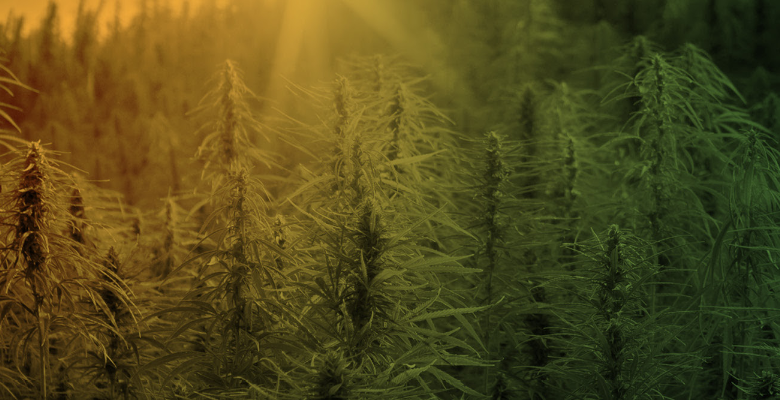Unlike cannabidiol (CBD), tetrahydrocannabinol (THC) is often the subject of speculation and prejudice, which made it difficult for many years to understand its mechanisms of action in Endocannabinoid System (ECS) and its several therapeutic potentials.
One of the main points in the discussion about THC concerns its toxicity and its potential to cause and/or worsen neurological functions and psychiatric disorders. However, it is now clear that in a context of medical use of this molecule, where there is adequate technical knowledge and prescriptive assertiveness, THC shows important therapeutic properties and minimal side effects. .
In addition to the prescribe cannabinoid derivatives , we bring in this text the main myths and truths about THC toxicity. . Read the post and access quality scientific knowledge to break paradigms and improve your patients’ results.
Is it possible to have a lethal overdose at high THC doses?
To date, there are no scientific studies identifying significant statistical associations between Cannabis and death or serious sequelae from overdose.
The explanation why Cannabis overdose is very difficult to occur is due to the almost non-existence of cannabinoid receptors in the respiratory and cardiovascular centers in brainstem.The few reports of death from overdose, mistakenly associated with Cannabis, in the world are associated with the use of synthetic derivatives , or concomitant abuse of other licit and illicit drugs.
>> Read more information about the mean lethal dose after oral THC administration in the 2018 World Health Organization (WHO) Drug Addiction Committee Report:: World Health Organization. Section 3: Toxicology. in Delta-9-tetrahydrocannabinol (2018).
The THC side effects
The side effects potentially related to the medical use of THC are mild, transient and often associated with therapy initiation or dose adjustments. Among the most common, we can mention: tachycardia, arterial hypotension, dryness in oral mucosa, eye dryness and redness, drowsiness, prostration, dizziness, headache, and changes in intestinal transit time.
Serious side effects such as anxiety attacks, hallucinations and psychoses are very rare in a technical and assertive prescriptive context. And even when they do occur, they are mostly transient and manageable with the aid of other drug products.
There are therapeutic strategies to avoid and mitigate potential THC side effects. One of them is based on entourage effect a synergistic relationship that occurs between all chemical compounds present in the plant, modulating potential adverse effects of THC and enhancing its therapeutic effects.
Different studies have already shown, for example, that CBD, is able to regulate undesirable THC effects such as tachycardia and sedation. The same synergy between CBD and THC happens to enhance analgesic and anti-inflammatory effects and optimize results in controlling chronic pain and symptoms of other diseases such as multiple sclerosis, alzheimer and epilepsy.
>> See articles explaining more about the entourage effect here:
Taming THC: potential cannabis synergy and phytocannabinoid-terpenoid entourage effects
Psychoactivity vs Psychotoxicity
To deconstruct myths and paradigms it is necessary to understand the concepts of psychoactivity and psychotoxicity.
The change in the state of consciousness induced by a substance is what we call psychoactivity. In the case of Cannabis, both THC and CBD cause such a change. Therefore, it is technically wrong to say that CBD is not a psychoactive element.
Psychoactive reactions resulting from CBD use can include drowsiness and prostration, depending on the dose and mode of administration, as well as an enhanced state of alertness, attention and increased disposition.
Likewise, depending on the mode of administration and the prescriptive strategy, THC psychoactivity can be associated with feelings of well-being, relaxation, increased pleasure, and sensory intensification in performing daily activities.
Note that these reactions are completely distinct from signs and symptoms of psychotoxicity, characterized by visual and auditory hallucinations, feelings of paranoia and persecution, generalized anxiety, mental confusion, and intense psychomotor agitation.
Through the use of qualified and laboratory-tested products and, above all, a safe and efficient prescriptive strategy, it is possible to explore the psychoactivity of THC to help patients in intense physical and psychological suffering,s we often observe in patients with neurological disorders, cancer and in refractory and disabling chronic pain .
Does THC Kill Neurons?
One of the most widespread myths regarding Cannabis to date is its alleged potential to kill neurons in users.
The idea that “marijuana kills neurons” spread from a study conducted at Tulane University in 1974, which exposed three Rhesus monkeys to inhalation of 0 cannabis cigarettes daily (approximately 1,000 cigarettes/month)during a period of 12 months.
The experiment resulted in the early death of these animals, and the histopathological study of their brain tissue showed neuronal damage and death.
Analysis by independent researchers concluded that the cause of death for those animals was actually hypoxia and ischemia resulting from carbon monoxide poisoning. And no other group of researchers in the world has so far been able to reproduce “the scientific methodology” applied in this study and conclude similar results.
It is true that THC, depending on the dose and mode of administration, can indeed cause changes in learning and memory processes, which is quite different from saying that the substance induces neuron death.
Contrary to what has been widely disseminated in recent years, THC demonstrates the potential to preserve and regenerate neurons due to its anti-neuro-inflammatory and anti-neuro-oxidant properties, as well demonstrated in this studywhere adult rodents showed an increase in the number of neurons in the hippocampus and an improvement in cognitive performance to the supervised administration of different doses of THC.
>> Read the complete research: Delta-9-Tetrahydrocannabinol (∆9-THC) Induce Neurogenesis and Improve Cognitive Performances of Male Sprague Dawley Rats
Therefore, this and several other studies point out that medical and assertive use of phytocannabinoids, including THC, may be a promising pharmacological resource in the treatment of neurodegenerative diseases, such as Alzheimer’s Dementia, Multiple Sclerosis,, Epilepsy, Autism Spectrum Disorder,, Parkinson’s disease, Amyotrophic Lateral Sclerosis and Progressive Supranuclear Palsy.
Does THC have medicinal potential?
THC has unique therapeutic properties that stand out, even when compared to CBD and other chemical elements of Cannabis.
THC is essential in cases of chronic painas it acts on type-1 endocannabinoid receptors of the sensory-motor cortex and amygdala, modulating the emotional and cognitive components related to pain perception.
It is also quite evident the antispasmodic and muscle relaxant effect of THC. The first Cannabis-based formulation registered with several regulatory bodies in the world, Sativex®was approved for the treatment of pain associated with the spasticity of Multiple Sclerosis.
Another important property of THC, especially when associated with the terpene myrcene,is sleep induction. Different studies have demonstrated this therapeutic potential of THC. Inclusively, in practice, it is common being able to reduce the use and wean form benzodiazepines and other sleep inducers, in patients who suffer from insomnia and other sleep disorders.
The anti-emetic potential is another medicinal property of THC that is already well known and explored.. Several studies,such as the one published by Meiri et al. (2007) have already shown a dramatic reduction in emesis associated with the use of synthetic cannabinoids such as dronabinol and nabilone. Not surprisingly, these cannabis-based drugs have been registered with the FDA in the US since the 1980s for the treatment of nausea and vomiting associated with chemotherapy.
Accessing qualified scientific knowledge is critical to fight misinformation and prejudice. At WeCann Academywe help doctors to break paradigms and access this disruptive knowledge to incorporate new therapeutic tools, safely and effectively.
We connect experts from around the world in a global community of Endocannabinoid System research and studies to link scientific knowledge and practical experience in the medical use of Cannabis.
Would you like to join us? Contact us and get ready to transform your patients’ results!
References
Russo, Ethan B. “Taming THC: potential cannabis synergy and phytocannabinoid-terpenoid entourage effects.” British journal of pharmacology vol. 163,7 (2011): 1344-64. doi:10.1111/j.1476-5381.2011.01238.x
SULIMAN, Noor Azuin. Delta-9-Tetrahydrocannabinol (∆9-THC) Induce Neurogenesis and Improve Cognitive Performances of Male Sprague Dawley Rats. Neurotoxicity Research, Serdang, v. 2, n. 33, p. 402-411, set. 2017.
Russo E, Guy GW. A tale of two cannabinoids: the therapeutic rationale for combining tetrahydrocannabinol and cannabidiol. Med Hypotheses. 2006;66(2):234-46. doi: 10.1016/j.mehy.2005.08.026. Epub 2005 Oct 4. PMID: 16209908
Thompson GR, Rosenkrantz H, Schaeppi UH, Braude MC. Comparison of acute oral toxicity of cannabinoids in rats, dogs and monkeys. Toxicol Appl Pharmacol. 1973 Jul;25(3):363-72. doi: 10.1016/0041-008x(73)90310-4. PMID: 4199474.




